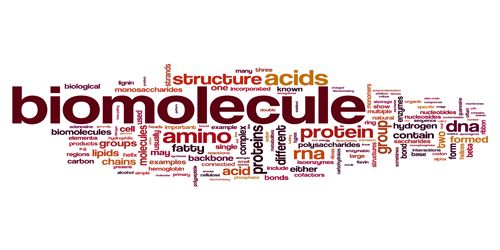Biomolecules are the most essential organic molecules, involved in the maintenance and metabolic processes of organisms. Biomolecules have a wide range of sizes and structures and perform a wide range of functions. The four main types of biomolecules are carbohydrates, lipids, nucleic acids, and proteins. Biomolecules include large macromolecules (or polyunsaturates) such as proteins, carbohydrates, lipids, and nucleic acids, as well as small molecules such as primary metabolites, secondary metabolites, and natural products. It has always been a mystery how a living organism, despite being made up of living molecules, performs all of the above functions by identifying life. In this chapter, we will try to unravel this mystery with the study of biomolecules. Being “organic” means, in general, that they contain carbon atoms bound to other atoms, especially carbon-carbon (C-C) and carbon-hydrogen (C-CH). The four main constituents are carbon, hydrogen, oxygen, and nitrogen.
Subfields of biology and its biochemistry and molecular biology study biomolecules and their reactions. Most biomolecules are organic compounds, and only four elements – oxygen, carbon, hydrogen, and nitrogen – make up 96% of the human body mass. Proteins can contain up to 20 different amino acids; The order in which they occur plays a fundamental role in determining the structure and function of proteins. Proteins themselves are the main structural components of cells. However, many other elements like various biometals are present in small quantities. They act as transporters, transmit nutrients and other molecules inside and outside the cell, and act as enzymes and catalysts for the huge amounts of chemical reactions that take place in animals. Proteins also make antibodies and hormones and they affect the activity of genes.
A protein is a biomolecule composed of amino acids that bind together with peptide bonds. An amino acid is a molecule consisting of a basic amino group (NH2), an acidic carboxylic group (COH), a hydrogen atom, and an organic side group (R) consisting of a carbon atom. Thus, it contains the basic formula of NH2 CRCOH. The similarity of both specific types of molecules (biomolecules) and specific metabolic pathways is a unique feature in the diversity of life forms; Thus these biomolecules and metabolic pathways are referred to as “theory of the integrity of living things” or “theory of the integrity of living things” with cell theory and evolutionary theory. Lipids, another key biomolecule in living organisms, play a variety of roles, including serving as a source of stored energy and acting as chemical messengers. They also form membranes, which separate cells from their environment and separate cell interior, giving rise to higher (more complex) organisms, such as the nucleus and mitochondria.













